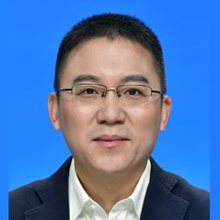Advances in Materials Science with Symmetry/Asymmetry
A special issue of Symmetry (ISSN 2073-8994). This special issue belongs to the section "Chemistry: Symmetry/Asymmetry".
Deadline for manuscript submissions: closed (30 September 2022) | Viewed by 3830
Special Issue Editors
Interests: anticorrosive coating; epoxy; acrylic; corrosion mechanisms; self-healing; Ti3C2Tx; stainless steel; proton exchange membrane fuel cell (PEMFC)
Special Issues, Collections and Topics in MDPI journals
Interests: electrocatalysts; water splitting; electrode materials; aqueous rechargeable batteries; nanoparticles; layered materials; intercalation; guest spices
Special Issues, Collections and Topics in MDPI journals
Special Issue Information
Dear Colleagues,
Symmetry and asymmetry are universal phenomena, from the macroscopic to microscopic scale. In materials science, symmetry and asymmetry have been found in fields such as crystallology, surface science, polymer science, and theoretical calculation, and have a great influence on the properties and applications of the materials. This Special Issue intends to present the latest advances in experimental and theoretical research related to symmetry/asymmetry in materials science.
Potential topics include, but are not limited to:
- Symmetry and asymmetry in electrocatalysis materials;
- Symmetry and asymmetry in mesoporous materials;
- Symmetry and asymmetry in layered materials;
- Symmetry and asymmetry in coatings;
- Symmetry and asymmetry in the theoretical calculation for materials;
- Symmetry and asymmetry in polymers;
- Symmetry and asymmetry in corrosion science;
- Symmetry and asymmetry in surface science.
Dr. Hongbin Lu
Dr. Duan Bin
Guest Editors
Manuscript Submission Information
Manuscripts should be submitted online at www.mdpi.com by registering and logging in to this website. Once you are registered, click here to go to the submission form. Manuscripts can be submitted until the deadline. All submissions that pass pre-check are peer-reviewed. Accepted papers will be published continuously in the journal (as soon as accepted) and will be listed together on the special issue website. Research articles, review articles as well as short communications are invited. For planned papers, a title and short abstract (about 100 words) can be sent to the Editorial Office for announcement on this website.
Submitted manuscripts should not have been published previously, nor be under consideration for publication elsewhere (except conference proceedings papers). All manuscripts are thoroughly refereed through a single-blind peer-review process. A guide for authors and other relevant information for submission of manuscripts is available on the Instructions for Authors page. Symmetry is an international peer-reviewed open access monthly journal published by MDPI.
Please visit the Instructions for Authors page before submitting a manuscript. The Article Processing Charge (APC) for publication in this open access journal is 2400 CHF (Swiss Francs). Submitted papers should be well formatted and use good English. Authors may use MDPI's English editing service prior to publication or during author revisions.






